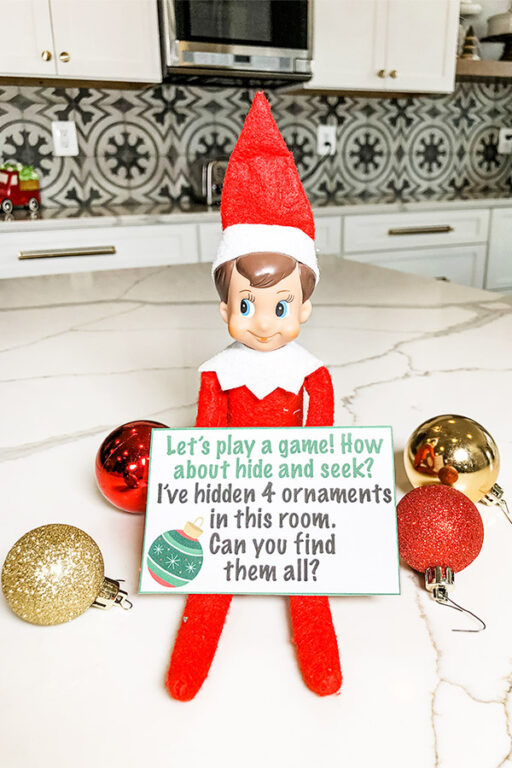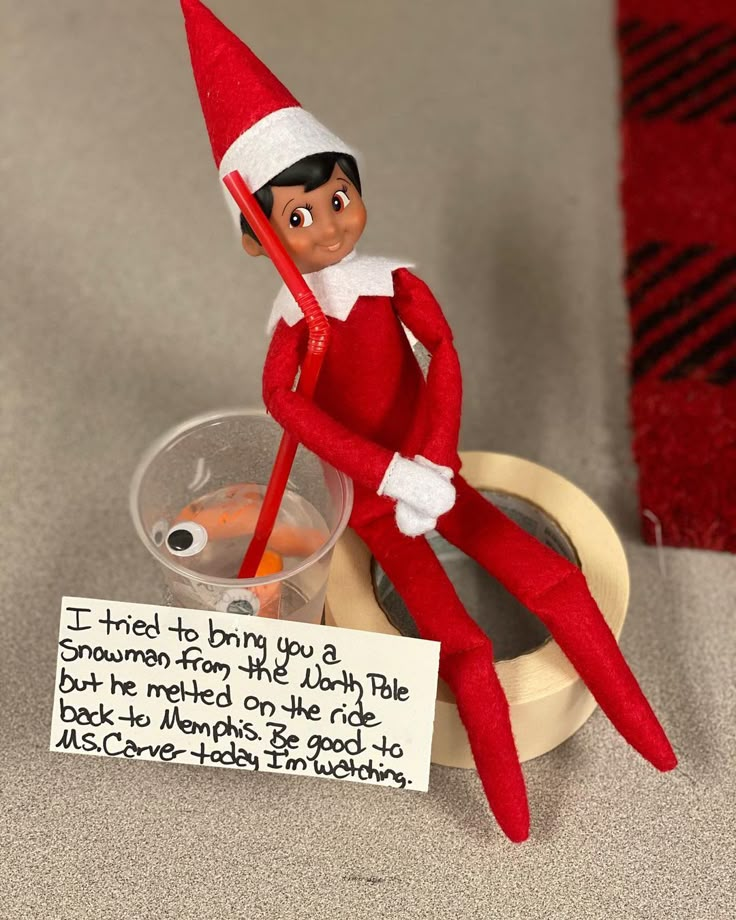The holiday season in a classroom is a unique blend of excitement, learning, and often, a touch of controlled chaos. Amidst the glitter, carols, and anticipation of winter breaks, many educators seek ways to amplify the festive spirit while maintaining an engaging learning environment. Enter the Elf on the Shelf – a beloved holiday tradition that, when adapted thoughtfully, can transform a classroom into a hub of wonder, motivation, and imaginative learning.
While traditionally a home-based visitor, the Elf on the Shelf has found a heartwarming place in classrooms worldwide. Far from being just a decorative item, a classroom elf can be a powerful tool for fostering literacy, encouraging positive behavior, sparking creativity, and even subtly teaching social-emotional skills. This article delves into a comprehensive array of Elf on the Shelf classroom ideas, designed to inspire educators to weave a little magic into their December days, making learning an enchanting adventure.
The Magic of an Elf in the Classroom: More Than Just Fun
Before diving into specific ideas, it’s crucial to understand the profound impact an elf can have in a classroom setting:
- Fosters Engagement and Wonder: Children are naturally drawn to magic and mystery. An elf arriving each day in a new, often mischievous, pose creates a daily ritual of discovery and excitement that can make even reluctant learners eager to come to school.
- Promotes Literacy Skills: The elf can be a fantastic springboard for reading, writing, and storytelling. From daily notes to creative writing prompts, the opportunities are endless.
- Encourages Positive Behavior: The elf is Santa’s "eyes and ears," a concept that can be gently leveraged to encourage kindness, helpfulness, and adherence to classroom rules.
- Sparks Creativity and Imagination: Both students and teachers get to flex their creative muscles, imagining what the elf might do next and how they might interact with it.
- Builds Classroom Community: The shared experience of the elf’s antics creates a common talking point, encouraging peer interaction and a sense of collective wonder.
- Supports Social-Emotional Learning (SEL): Through the elf’s actions, teachers can subtly introduce concepts of empathy, problem-solving, and managing expectations.
Pre-Arrival Preparations: Setting the Stage for Enchantment
A successful classroom elf experience begins long before the elf makes its grand entrance. Careful planning ensures a smooth, magical, and manageable December.
- Choose Your Elf and Name It (or Let Students!): Decide on your elf. Many teachers opt for a traditional Elf on the Shelf, while others choose a different "winter friend" to be more inclusive. You can either pre-name your elf or make its naming a class activity. Popular classroom elf names include Sparkle, Jingles, Holly, or even names related to your school mascot.
- Establish Clear Rules: The most important rule for any Elf on the Shelf is "no touching." Explain to students that touching the elf might make it lose its magic. Have a gentle consequence if the rule is broken (e.g., the elf stays in one spot for a day, or leaves a "sad" note).
- Gather Props and Materials: Start collecting mini props: tiny toys, craft supplies, string, cotton balls (for snow), small books, sticky notes, markers, and anything else that might aid in creative elf displays. A hot glue gun is invaluable for posing.
- Consider Your Time Commitment: Be realistic. You don’t need elaborate setups every single day. Some days can be simple (elf reading a book), others more complex (elf building a fort). Having a calendar of ideas can help.
- Introduce the Concept: Before the elf arrives, explain to students what an Elf on the Shelf is and why it visits classrooms. This builds anticipation and understanding.
The Grand Entrance: Making a Memorable First Impression
The elf’s arrival sets the tone for the entire season. Make it special!
- The "Special Delivery" Package: Have the elf arrive in a decorated box with "North Pole" stamps, perhaps with a letter from Santa explaining its purpose.
- A Grand Entrance Pose: Position the elf doing something immediately attention-grabbing: swinging from the classroom light fixture, zip-lining across the room, or peeking out from a stack of books with a welcoming note.
- A Welcoming Letter: The elf should arrive with a letter introducing itself, explaining its role, and setting the "no touching" rule. This is a great opportunity for a shared reading activity.
Daily Adventures: Integrating the Elf into Learning
Here’s where the magic truly unfolds. These ideas blend festive fun with educational objectives.
A. Academic Integration
-
Literacy Elf:
- Reading Buddy: Find the elf "reading" a classroom book, leaving a sticky note with a favorite quote or question.
- Book Recommendations: The elf leaves a note suggesting a new book for the class to read, or highlights a book related to a current lesson.
- Story Starters: The elf leaves a half-written story, prompting students to finish it.
- Vocabulary Builder: The elf hides new vocabulary words around the room, leading students on a word hunt.
- Letter Writing: Students can write daily letters to the elf, asking questions or sharing observations. The elf can "write back" (with your help!).
- Poetry Corner: The elf leaves a short poem about kindness, winter, or a classroom topic.
-
Math Marvel Elf:
- Counting Challenge: The elf arranges small objects (e.g., candy canes, mini erasers) and leaves a note asking students to count them.
- Measurement Fun: The elf "measures" classroom objects with a tiny ruler or string, leaving questions for students to answer.
- Graphing: The elf can create a simple graph (e.g., favorite winter activities, how many times the class showed kindness) for students to analyze.
- Problem Solving: The elf leaves a simple math word problem for students to solve, perhaps involving its "journey" from the North Pole.
-
Science & STEM Elf:
- Observation Station: The elf sets up a simple experiment (e.g., melting ice, growing a bean sprout) and leaves a note asking students to observe changes.
- Engineering Challenge: The elf tries to build a small tower or bridge out of craft sticks, leaving a note challenging students to do better.
- Weather Watcher: The elf "reports" on the day’s weather, perhaps leaving a tiny weather chart.
-
Art & Creativity Elf:
- Drawing Prompts: The elf leaves a drawing prompt (e.g., "Draw what you think my home at the North Pole looks like").
- Craft Inspiration: The elf might be found with craft supplies, inspiring a class art project.
- Elf Self-Portraits: Students can draw or paint pictures of the elf in various poses.
B. Social-Emotional Learning (SEL) & Classroom Management
- Kindness Counter: The elf observes acts of kindness and leaves a note acknowledging them, or adds a pom-pom to a "kindness jar" for each good deed observed.
- Helping Hands Elf: The elf leaves a note encouraging students to help a classmate, or models helpful behavior (e.g., "tidying" a small section of the classroom).
- Listening Ears Elf: The elf can be found with its "ear to the ground" or holding a tiny megaphone, reminding students about active listening.
- Calm Corner Elf: If you have a calm-down corner, the elf might be found there with a book about feelings, encouraging students to use the space when needed.
- Behavior Reinforcer: The elf can leave small notes praising individual students or the class for positive behavior (e.g., "Great job transitioning quietly today!").
C. Pure Fun & Whimsy
-
Mischievous Elf:
- Toilet paper the classroom (gently!).
- Leave "footprints" (flour or glitter) on the counter.
- "Write" on the whiteboard with a dry-erase marker.
- Rearrange classroom items in a silly way.
- Take a "selfie" with a classroom tablet or phone.
- Swing from a plant or curtain rod.
-
Tiny Tea Party: Set up a miniature tea party with other classroom toys.
-
Snack Time Elf: The elf can be found with a small treat (e.g., candy cane, mini cookie) for the class, or even "making" mini pancakes with cotton balls.
-
Game Night: The elf can be found playing a board game with other stuffed animals.
-
Zip Line Adventure: Create a zip line using string and a paper clip, sending the elf soaring across the room.
-
Hide-and-Seek: The elf hides in a new, unexpected spot each day.
-
Message in a Bottle: The elf leaves a tiny scroll in a small bottle with a message for the class.
Saying Goodbye: The Elf’s Departure
The elf’s departure is just as important as its arrival.
- Farewell Letter: The elf should leave a heartfelt goodbye letter, thanking the students for their kindness and sharing observations from its visit. It can promise to return next year.
- Small Parting Gift: The elf might leave a small gift for the class – a new holiday book, a box of candy canes, or a craft kit for winter break.
- A Final Pose: The elf’s last pose could be waving goodbye from a window, or packed in its box, ready for its journey back to the North Pole.
Tips for a Seamless Elf Experience
- Keep it Simple: You don’t need elaborate setups every day. Some days, just moving the elf to a new spot is enough.
- Have a "Backup Plan": What if you forget to move the elf? Have a story ready (e.g., "Oh no, the elf must have been too tired after watching all your hard work yesterday!").
- Involve the Students: Let them name the elf, suggest ideas for its activities, or even write letters to the elf. This boosts engagement.
- Document the Journey: Take photos of the elf’s daily antics. These make wonderful memories and can be compiled into a class book.
- Use a Hot Glue Gun (Carefully!): A tiny dab of hot glue can help pose the elf in tricky positions (e.g., holding a pencil, balancing on an object). It peels off easily.
- Consider a "Classroom Helper" Elf: Instead of just mischief, some teachers prefer an elf that primarily helps with classroom tasks or encourages learning.
Important Considerations: Safety and Inclusivity
- Allergies: If the elf leaves treats, be mindful of any student allergies.
- Cultural Sensitivity: Not all students celebrate Christmas. Frame the elf as a "winter friend" or a "kindness elf" rather than solely tied to Christmas. Emphasize the themes of joy, kindness, and wonder, which are universal.
- Manage Expectations: Be clear that the elf is part of a fun classroom tradition, and avoid pressuring students to "believe" in the same way they might believe in Santa at home.
- Accessibility: Ensure elf setups are visible and accessible to all students, including those with mobility challenges.
Conclusion: Weaving Wonder into the Classroom Fabric
The Elf on the Shelf, when used creatively and thoughtfully, can be far more than a holiday novelty. It’s a dynamic tool that can infuse a classroom with joy, wonder, and a unique approach to learning. By embracing the magic, planning strategically, and integrating the elf into various aspects of the curriculum and classroom culture, educators can create unforgettable December memories and foster an environment where imagination thrives. So, this holiday season, invite a little magic into your classroom – and watch your students’ eyes light up with delight and discovery.


